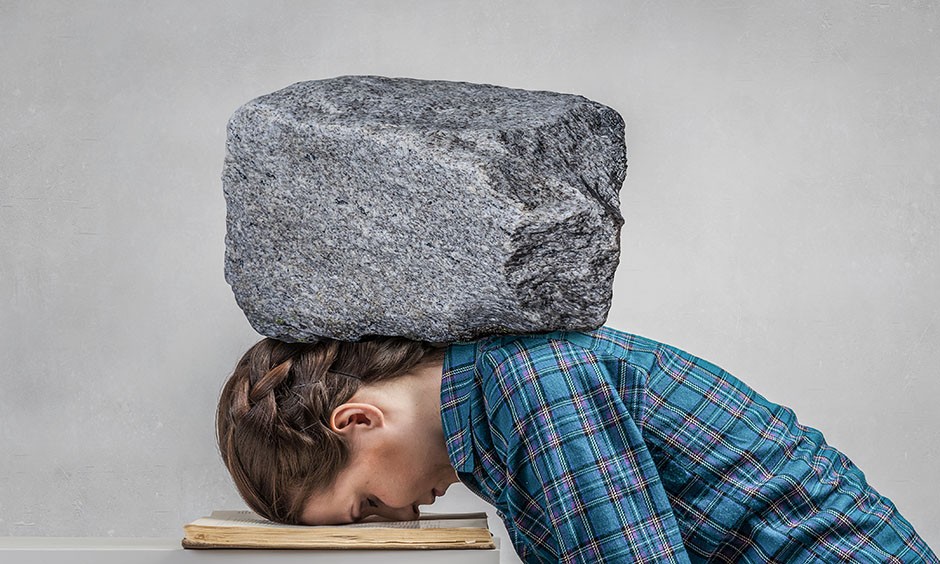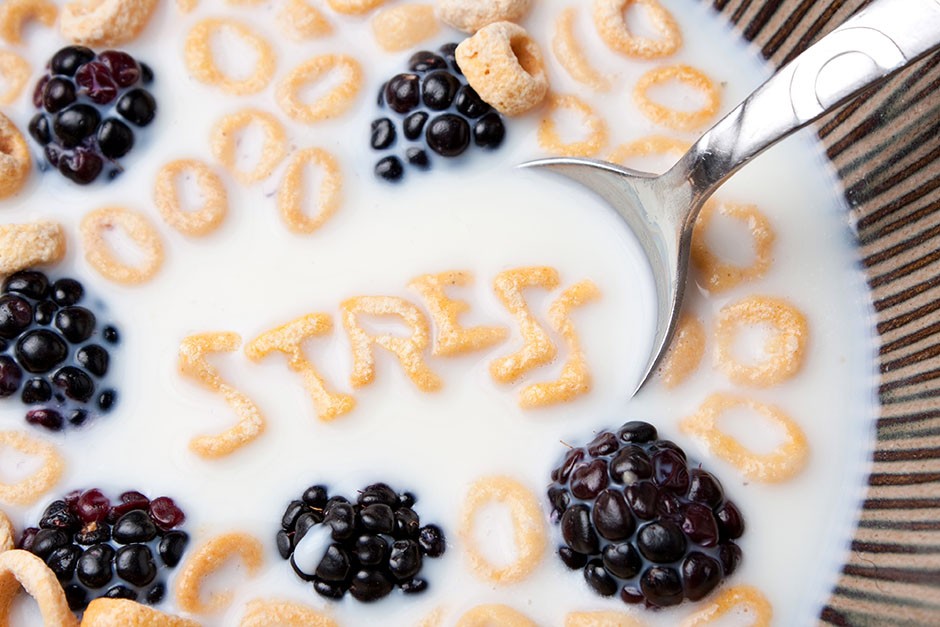What are common creative stressors?
One key set of stressors is connected to the concept of restriction in time, task, or resources. These restrictions can be paradoxical. Working to a deadline can heighten stress and at the same time increase focus. The definition of the task may impose limitations or obstacles that need to be researched, navigated, or intentionally resisted. Insufficient resources may slow or prevent completion of a task or inspire productive adaptation of other materials.
Uncertainty is another possible stressor. Self-confidence about your own ability or moments of indecision during the creative process can either encourage or dishearten, affecting our ability to persist when the outcome is unclear. Our brain is wired to default to the simplest solution possible, especially when we are uncertain.
All of this to say: restrictions like deadlines or defined outcomes can inhibit creativity, but good news: they can also help.
When is stress counterproductive for creativity?
Stress is counterproductive for creativity when the stressor becomes the focus, rather than the task itself. In this case, we are more likely to seek a shortcut to escape the stress, resulting in underdeveloped or superficial solutions.
Another stressor that affects creativity is known as ‘uncontrollability’. If you believe that the effort that you put in is unlikely to affect the outcome you want, this belief will inhibit idea generation. When we are working under time constraints or with a specific creative outcome or target in mind such as following a recipe, we are less invested and therefore put in less effort. You need a degree of freedom for your creative abilities to flourish.
Conversely, an absence of any stress can inhibit creativity. An undefined, or open-ended task can limit creativity because the brain needs something to connect with or challenge in order to trigger long-term memory – a significant contributor to new ideas.
When is (some) stress good for creativity?
One way we can respond to high levels of stress is through improvisation – a supra-normal response which uses spontaneous, uninhibited thinking that can sometimes provide surprisingly good results. Supra-normal behaviour diverges from instinctive or predictable patterns of behaviour. When animals are faced with an unfamiliar or threatening situation, they may revert to supra-normal behaviour, improvising in order to survive. If the animal is successful in that situation, the new behaviour may become adopted full-time. In a human context, generating as many ideas as possible first, and then sorting them later may allow you to stumble upon a novel or useful solution.
Moderate degrees of time pressure can positively enhance creativity as it gamifies the creative task. Any gamer knows that a time limit forces you to strategize how you can perform a task – beating the clock becomes part of the reward mechanism. Some challenges offer intrinsic rewards – the intrigue of the task is as satisfying as the solution – which speaks to the popularity of puzzles and escape rooms. In some cases, procrastination or disengaging from a focused creative task allows for the brain to passively work on a question while the body is engaged in some other task.


 Credit: Shutterstock
Credit: Shutterstock
 Credit: Shutterstock
Credit: Shutterstock
 Credit: Shutterstock
Credit: Shutterstock
